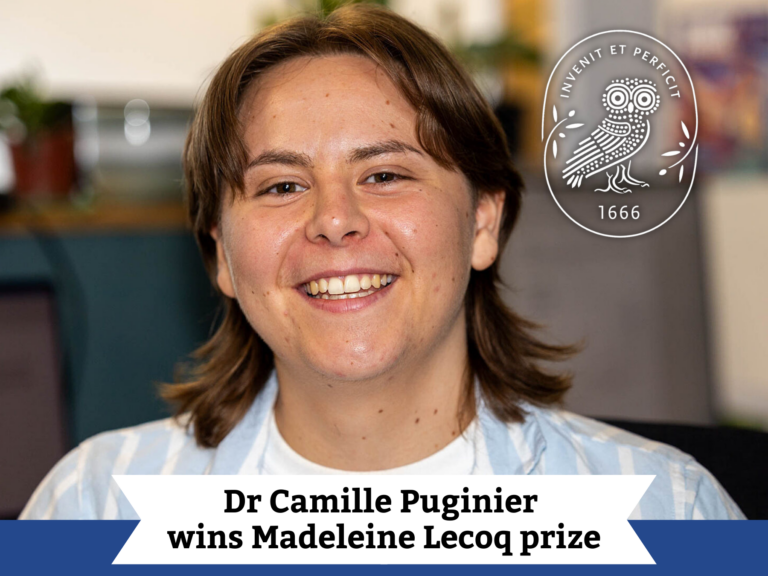Plant cells react differently to pathogen
Single-cell transcriptomics shows huge potential in uncovering previously obscured molecular events between plants and pathogens. Scientists were able to map how plant cell types responded differently to a fungal pathogen by applying this exciting new method.

DNA, RNA, and plant immunity
We can study plant immunity by infecting leaves of a model plant with a model pathogen - blending that all up and then extracting genetic material. With this sample we can sequence DNA, the plant's stable genetic code, or messenger RNA (mRNA), a copied section of DNA (i.e., a gene) intended to build a certain protein.

By analysing mRNA we can infer which genes are expressed by a plant at specific stages of infection, therefore indicating that they contribute to a plant's response to pathogen invasion or the development of the disease.
Single-cell RNA sequencing
However, by analysing a bulk mix of genetic information extracted from the leaves of a model plant such as Arabidopsis, we're left with a fairly broad estimation of what happens at the single-cell level at different stages of infection.
'What we've essentially been dealing with is a fruit smoothie when what we'd really like is a fruit bowl." says Bozeng Tang, lead author of the paper and a postdoctoral scientist in Wenbo Ma's lab at The Sainsbury Laboratory in Norwich.
"Bulk RNA sequencing has been a powerful tool in helping us understand the fundamentals of plant immunity, but we're now discovering that this method may be masking some remarkable patterns during infection."
Scientists are getting increasingly excited by the possibility to extract genomic information from a single cell instead of relying on a bulk sample, and the potential of single-cell sequencing to answer longstanding biological questions.

Using microfluidics, a sample of cells can be split into tiny droplets - separating and encapsulating each cell into its own droplet of reagent. Within in this droplet, the RNA is extracted and tagged with a unique barcode to link it to its original cell before being sequenced. This enables researchers to investigate cell type-specific gene expression which would have been masked by bulk RNA-seq.
Heterogeneity in plant immunity
As single-cell sequencing technologies continue to advance, more and more labs are thinking of innovative ways to apply it to new research questions.
"We already know that there is heterogeneity in the way disease affects certain parts of the plants." Bozeng says, "Depending on the pathogen, infection can be more severe on the stems or areas of new growth. It's important to understand how this is happening at a cellular level."
Bozeng and co-authors from The Sainsbury Laboratory and Leiden University set out to adapt a method using single-cell RNA sequencing to investigate the response of each Arabidopsis cell during the invasion of a model fungal pathogen, Colletotrichum higginsianum, which causes anthracnose disease.
With this advanced method the researchers were able to sequence 95, 040 different Arabidopsis leaf cells, which formed 25 different clusters and included all major cell types.

Single-cell RNA sequencing also allowed the team to capture gradual changes in gene expression during the fungal infection process. Combining gene expression profiling and live-cell imaging, the researchers were able to establish genetic indicators for how far away the plant cell is from the pathogen. This enabled them to reconstruct spatially dynamic responses to fungal infection such as signalling in guard cells which corresponds to stomatal closure at the fungal infection sites.

This analysis also reveals cell type-specific expression of immune receptor genes, which was rather surprising. The team found that certain intracellular immune receptors were expressed more in some types of cells compared to others. For example, they discovered a predominant enrichment of a particular class of immune receptors, TIR-NLRs, in vasculature cells. The authors propose that this heightened expression of the immune receptors could be aimed at protecting pathogen invasion of the vasculature system of the plants and/or facilitating the spread of immune signalling.

"This was an unexpected result for us and we're excited to realise that we've only scratched the surface of what other patterns can still be revealed." says Bozeng, "The next step will be to flip the mirror on the pathogen itself and use single-cell sequencing to track what is happening while it goes through all of these major morphological changes during infection."
This work offers major insights for studying intricate dynamics in plant-microbe interactions and provides a valuable dataset and method that supports in-depth investigations of plant-pathogen interactions. With a higher resolution understanding of how plants resist or succumb to disease, technological applications in agriculture can become more precise and efficient.
Advances such as these may even allow us to develop disease resistant crops that precisely express defense-related genes at the pathogen infection sites, therefore minimizing growth penalties of the plants.

A team of proud authors (from left to right): Michelle Hulin, Bozeng Tang and Li Feng.
Group leader, Prof. Wenbo Ma, shares that this work was initatied in 2021 shortly after her group moved to The Sainsbury Laboratory and that it was fully supported by funding from the Gatsby Charitable Foundation. She emphasises that these advances would not not been possible without their general support including the purchase of equipment required for single cell sorting and barcoding.
"This study demonstrates how single cell-based analysis can be extremely useful in studying plant-microbe interactions." Wenbo says, "All data have been made publicly available before the publication of this paper and we hope they will benefit many research activities in the community. From the many interesting observations that have already been made using single-cell omics, including our own work, it has become clear that this technology will enable exciting discoveries of new biology in plant-pathogen interactions."
Heterogeneous plant responses to fungi. @BozengTang @wenboEffector use single-cell transcriptomics to assess responses to #fungal infection. They reveal vasculature-enriched expression of immune receptors & cellular processes induced by pathogen contact https://t.co/GDjCsvUgjv pic.twitter.com/hR39HQN0Zd
— Cell Host & Microbe (@cellhostmicrobe) September 25, 2023
Our most recent work from postdocs @BozengTang @michhulin @LiFeng0630 @TheSainsburyLab and collaborator @sardineboy_DING now published @cellhostmicrobe
— Dr. Wenbo Ma (@wenboEffector) September 22, 2023
Cell-type-specific responses to fungal infection in plants revealed by single-cell transcriptomics https://t.co/dFcFS54WVh
Glad to see the reviewed version of our previous preprint paper been published @cellhostmicrobe https://t.co/Lfl5vbDT77
— Bozeng Tang (@BozengTang) September 22, 2023
Very grateful to the reviewers and my wonderful colleagues @TheSainsburyLab, our collaborator @sardineboy_DING, and my supervisor @wenboEffector. https://t.co/xjIBZSL8WG


